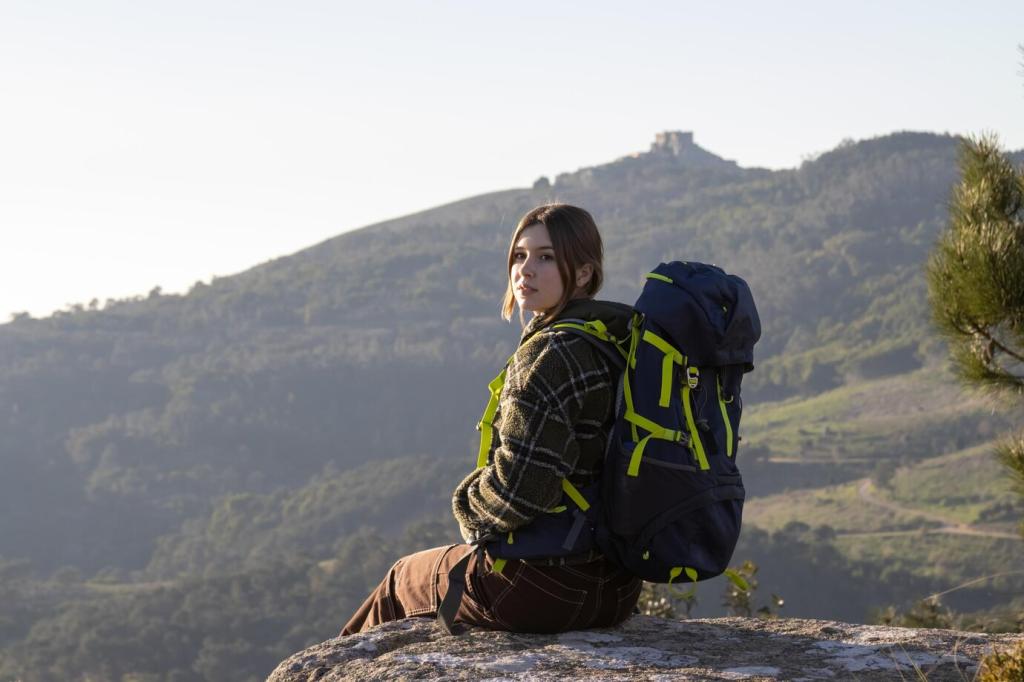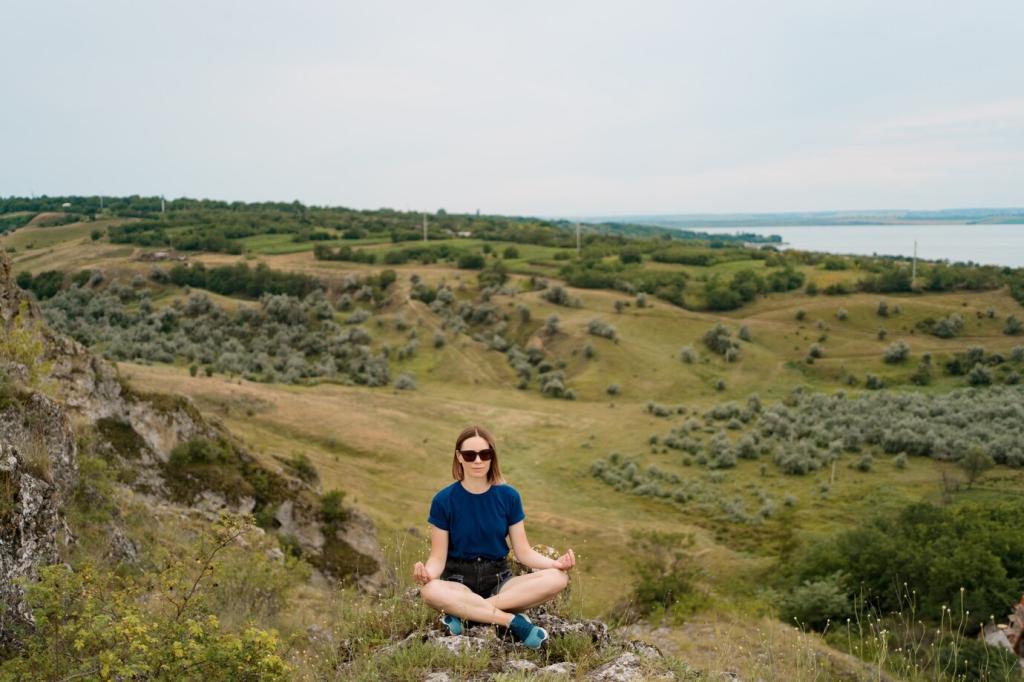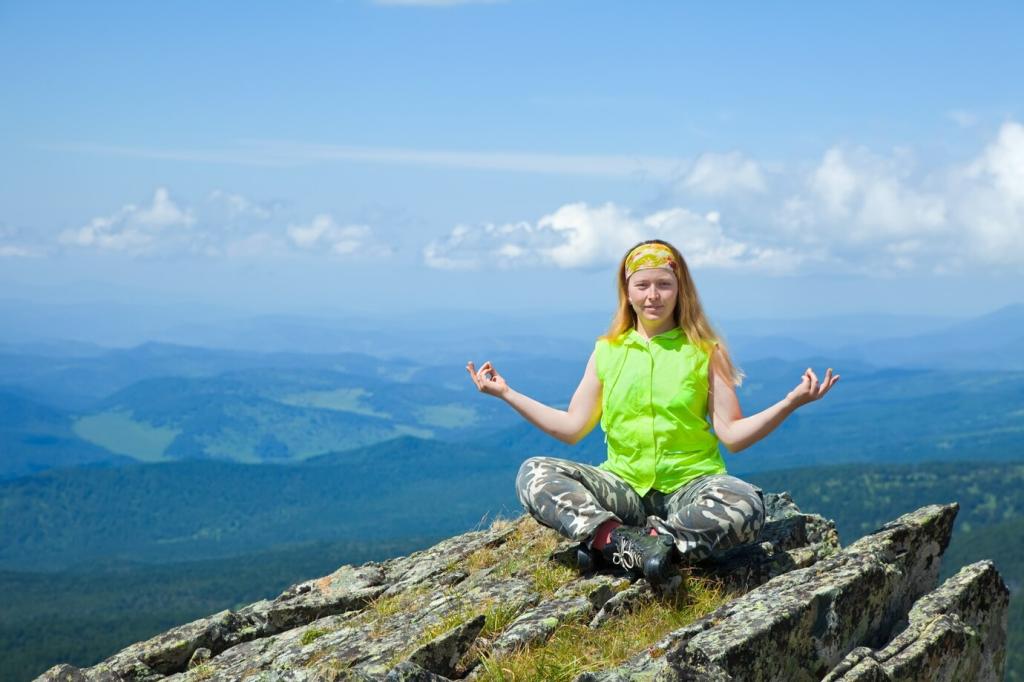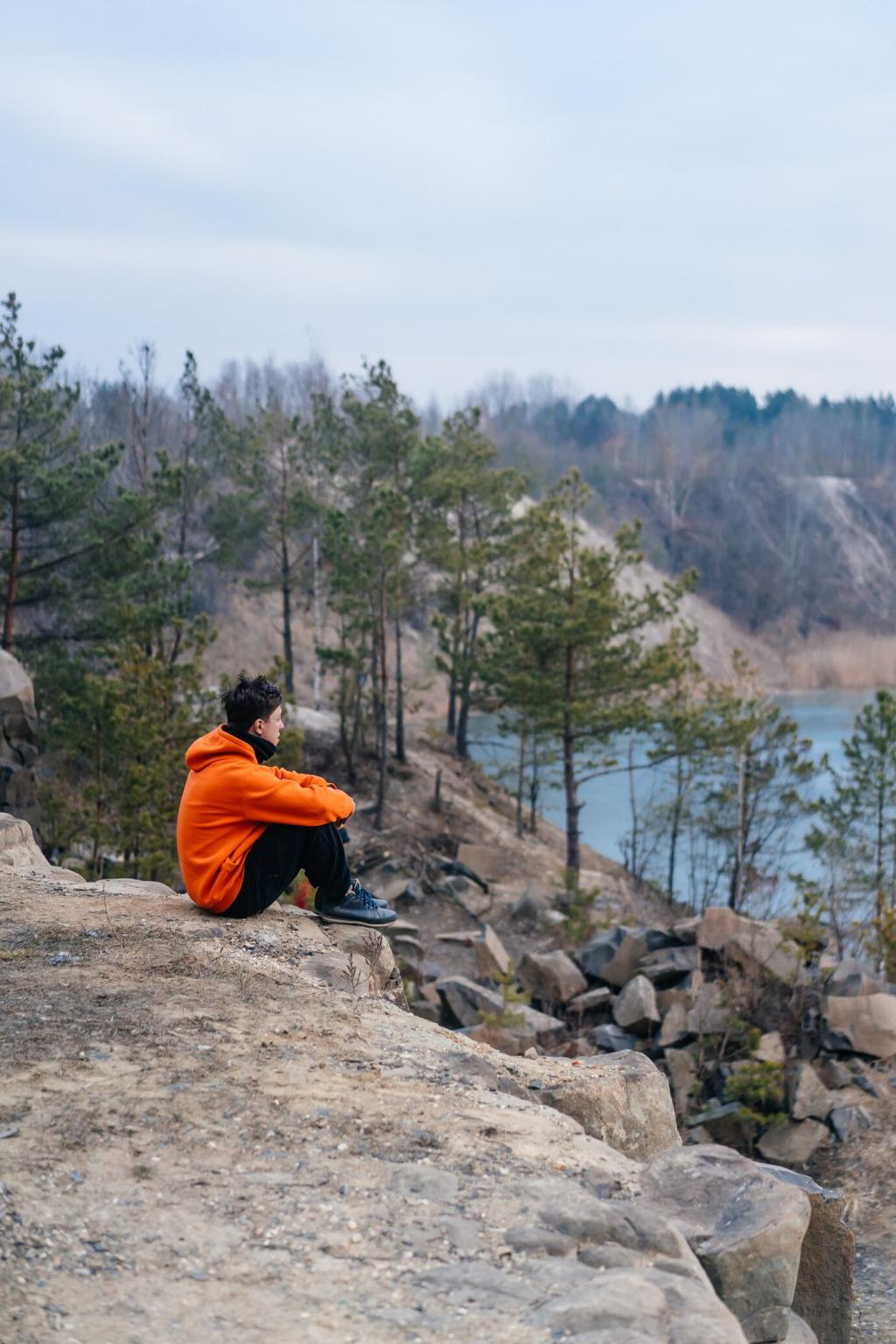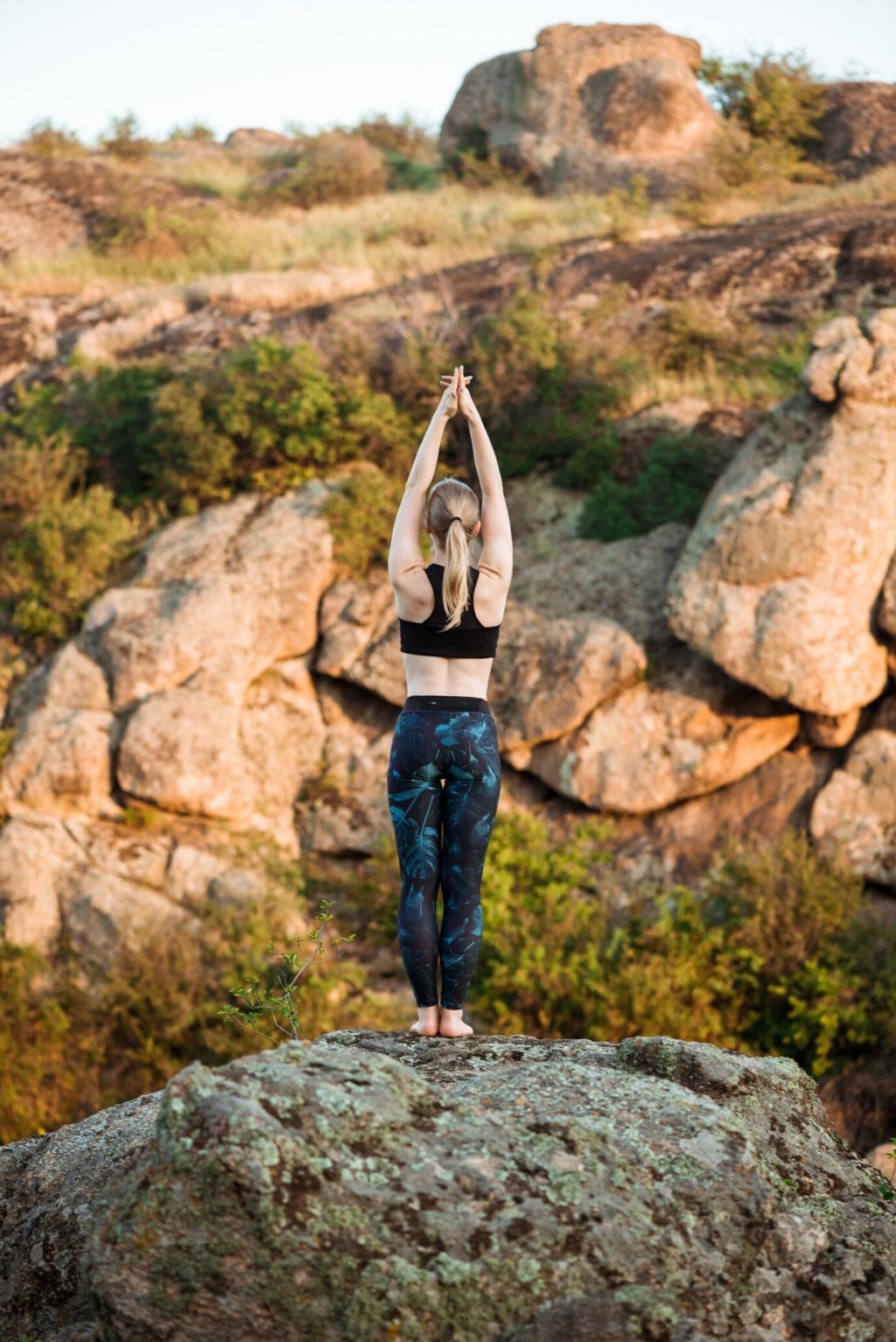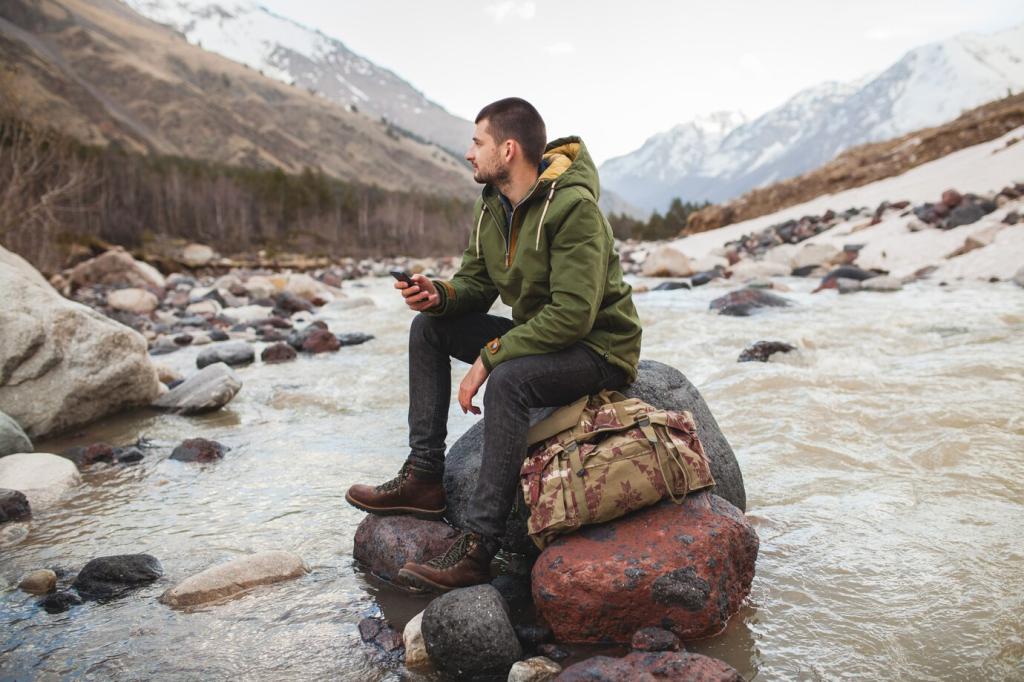Recovery at Camp: Sleep, Rehydration, and Gentle Breath
Inhale four, hold seven, exhale eight. This extended exhale cues deep rest, especially after a long summit bid. Give it two minutes in your bag and report back whether it shortened your midnight toss-and-turn routine.
Recovery at Camp: Sleep, Rehydration, and Gentle Breath
Place a soft bottle under your ribs and breathe slowly against that pressure for ten breaths. Muscles soften; breath deepens. Share your recovery hacks and subscribe for a field guide to gentle camp mobility.

